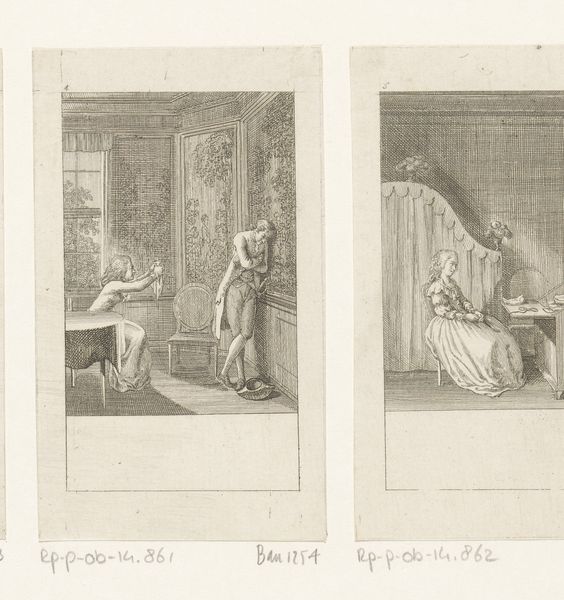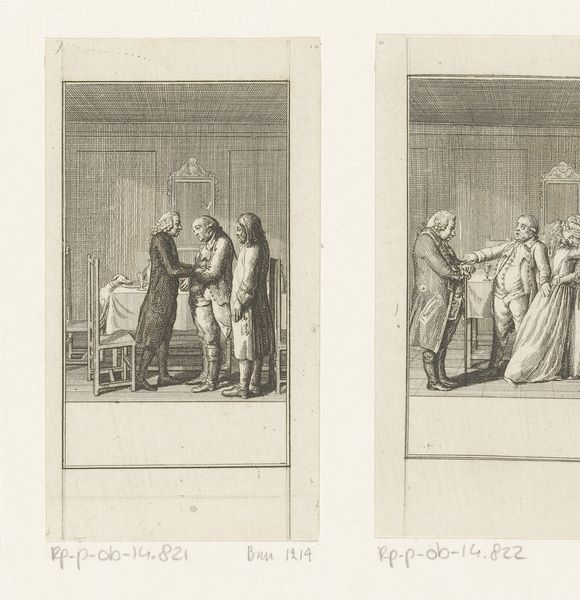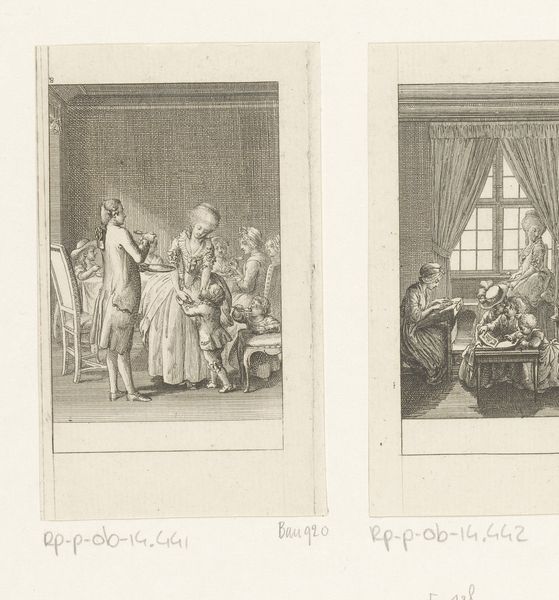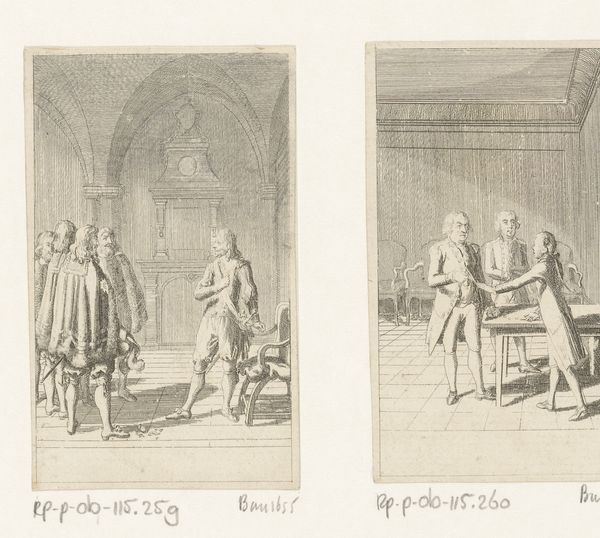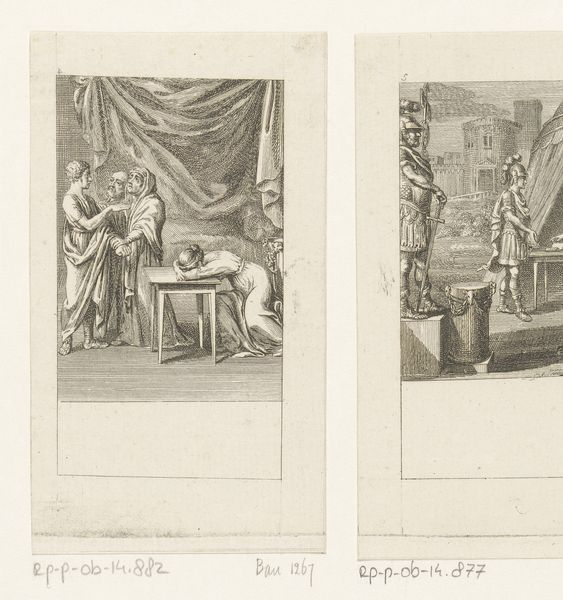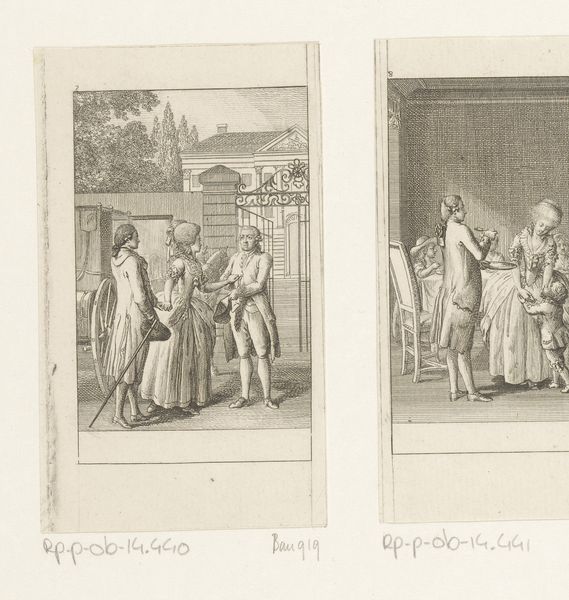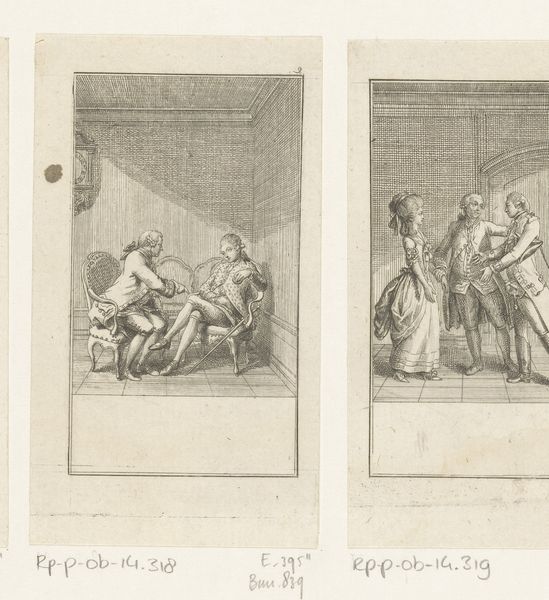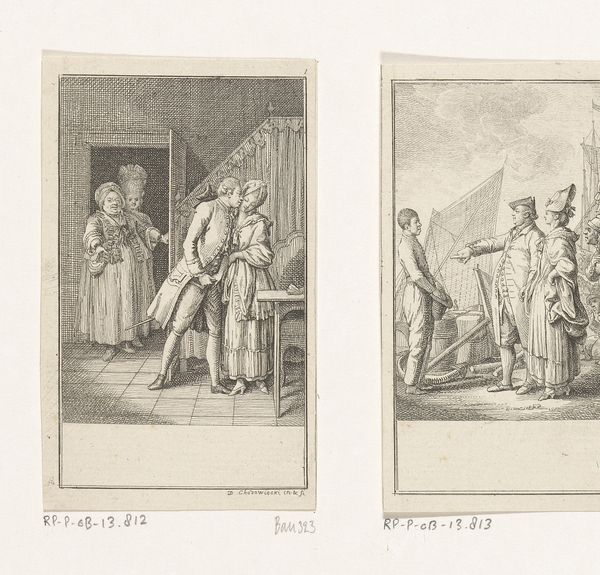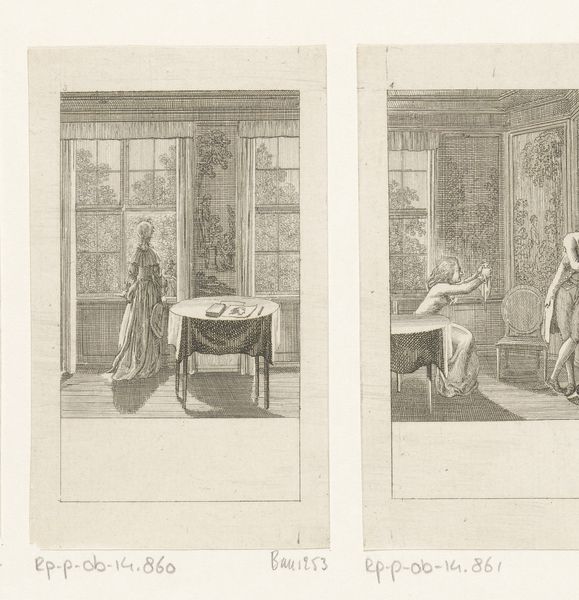
Dimensions: height 100 mm, width 62 mm
Copyright: Rijks Museum: Open Domain
This print, "Medische dwaasheid," was made by Daniel Nikolaus Chodowiecki, using etching, a printmaking technique with a long and fascinating history. The process begins with a metal plate, traditionally copper, covered with a waxy, acid-resistant ground. The artist then draws through this ground with a sharp needle, exposing the metal. When the plate is immersed in acid, the exposed lines are ‘bitten’ or etched, creating grooves. Ink is then applied to the plate, filling these grooves, and the surface is wiped clean. Finally, the plate is pressed onto paper, transferring the ink and creating the print. The etched line has a distinctive quality, a kind of controlled irregularity that’s quite different from an engraved line. You can see this clearly in the fine details of Chodowiecki’s print. These precise lines capture not just the forms but also the textures and social commentary inherent in the scene. In understanding artworks like this, the methods used matter just as much as what is being shown. The way in which things are made really does shape our understanding and appreciation.
Comments
No comments
Be the first to comment and join the conversation on the ultimate creative platform.
